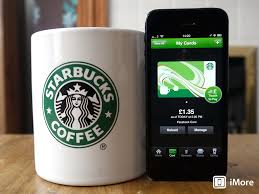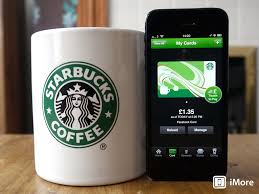
While being a very lucrative alternative means for business and sale, the digital world can dump an avalanche of orders in a short period of time, creating delays and lines that scare away customers as Starbucks' has found.
The company’s coffee shops are suffering from a feared consequence of the mobile revolution by delays in delivery due to overwhelming orders on its digital platform.
The U.S. restaurant industry hopes that mobile order will boost sales while reducing the burden of rising labor costs and Starbucks Corp is an early adopter of mobile order and payment technology.
But creating bottlenecks at drink delivery stations and leading some walk-in customers to walk out, baristas at the company's busiest cafes had difficulty keeping up with mobile orders in the latest quarter. But Starbucks shares on Thursday was sent down 3.8 percent in after-hours trade as the company posted a smaller-than-expected rise in quarterly sales at established restaurants in the Americas and trimmed its full-year revenue forecast.
"It's a high-quality problem" that Starbucks is up to the task of addressing, said AB Bernstein analyst Sara Senatore. She noted that the company found a workaround a few years ago after service slowed when baristas started warming La Boulange pastries for customers.
"We are now laser-focused on fixing this problem, but the nature of it - too much demand - is an operational challenge we have solved before and I can assure you we will solve again," Chief Executive Officer Howard Schultz said on a conference call.
Spokeswoman Linda Mills said that at some of its top volume cafes during peak hours Starbucks began adding one to two more baristas focused on mobile orders and payment earlier this week.
Mills said that internal testing text notifications that alert customers when their orders are ready are being conducted and executives are also rethinking work routines.
"There is some incremental labor, but it's mostly just using it more effectively," said AB Bernstein's Senatore.
It was not long ago that Starbucks reported that traffic, also referred to as transactions, at its U.S. cafes slumped during the latest quarter and the news of the operational challenges came amidst such an environment.
The company changed from a loyalty program based on transactions to one based on dollars spent and this is partly responsible for the result. Because the prior set-up encouraged some customers to game the system by purchasing multiple items via multiple transactions rather than just one, that switch was designed to address lines at pay stations.
While remaining concerned about the broader restaurant demand environment, Starbucks is expected to work the kinks out of mobile ordering and pay by Stephens analyst Will Slabaugh.
The issue has "created anxiety" among some customers, said CEO Howard Schultz, who is leaving that role in April to become executive chairman.
There was a rise of 3 percent in sales at established stores of the company for the three months ended Jan. 1. And with more people tacking on items like breakfast sandwiches and other food, the increase was the result of higher spending per visit.
(Source:www.reuters.com & www.thesouthern.com)
The company’s coffee shops are suffering from a feared consequence of the mobile revolution by delays in delivery due to overwhelming orders on its digital platform.
The U.S. restaurant industry hopes that mobile order will boost sales while reducing the burden of rising labor costs and Starbucks Corp is an early adopter of mobile order and payment technology.
But creating bottlenecks at drink delivery stations and leading some walk-in customers to walk out, baristas at the company's busiest cafes had difficulty keeping up with mobile orders in the latest quarter. But Starbucks shares on Thursday was sent down 3.8 percent in after-hours trade as the company posted a smaller-than-expected rise in quarterly sales at established restaurants in the Americas and trimmed its full-year revenue forecast.
"It's a high-quality problem" that Starbucks is up to the task of addressing, said AB Bernstein analyst Sara Senatore. She noted that the company found a workaround a few years ago after service slowed when baristas started warming La Boulange pastries for customers.
"We are now laser-focused on fixing this problem, but the nature of it - too much demand - is an operational challenge we have solved before and I can assure you we will solve again," Chief Executive Officer Howard Schultz said on a conference call.
Spokeswoman Linda Mills said that at some of its top volume cafes during peak hours Starbucks began adding one to two more baristas focused on mobile orders and payment earlier this week.
Mills said that internal testing text notifications that alert customers when their orders are ready are being conducted and executives are also rethinking work routines.
"There is some incremental labor, but it's mostly just using it more effectively," said AB Bernstein's Senatore.
It was not long ago that Starbucks reported that traffic, also referred to as transactions, at its U.S. cafes slumped during the latest quarter and the news of the operational challenges came amidst such an environment.
The company changed from a loyalty program based on transactions to one based on dollars spent and this is partly responsible for the result. Because the prior set-up encouraged some customers to game the system by purchasing multiple items via multiple transactions rather than just one, that switch was designed to address lines at pay stations.
While remaining concerned about the broader restaurant demand environment, Starbucks is expected to work the kinks out of mobile ordering and pay by Stephens analyst Will Slabaugh.
The issue has "created anxiety" among some customers, said CEO Howard Schultz, who is leaving that role in April to become executive chairman.
There was a rise of 3 percent in sales at established stores of the company for the three months ended Jan. 1. And with more people tacking on items like breakfast sandwiches and other food, the increase was the result of higher spending per visit.
(Source:www.reuters.com & www.thesouthern.com)





